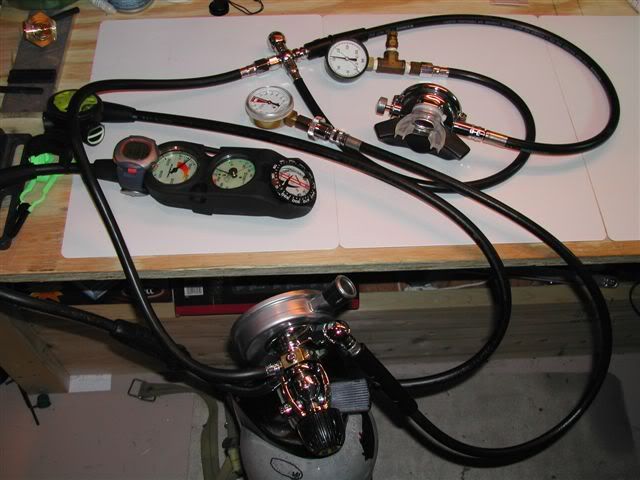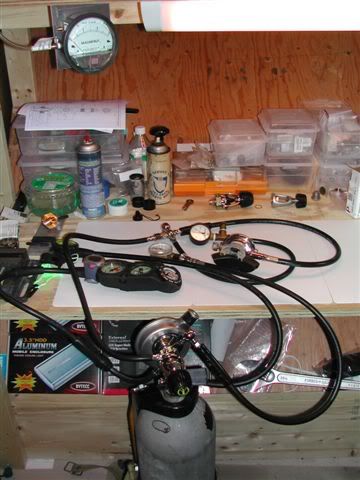mwilding
Contributor
Thank you all for making this a very informative thread. While I don't have any plans to run out and buy a Magnehelic gauge, I will buy an IP gauge right quick.
Welcome to ScubaBoard, the world's largest scuba diving community. Registration is not required to read the forums, but we encourage you to join. Joining has its benefits and enables you to participate in the discussions.
Benefits of registering include
Thank you all for making this a very informative thread. While I don't have any plans to run out and buy a Magnehelic gauge, I will buy an IP gauge right quick.
Thank you all for making this a very informative thread. While I don't have any plans to run out and buy a Magnehelic gauge, I will buy an IP gauge right quick.
Be aware that if you use a IP gauge that is connected to your inflator hose, it will not react as fast as one that is inline. You can get a good handle on what your IP pressure is, but troubleshooting stuff works best with an inline IP gauge. With piston first stages that is not as much of a problem, but with Diaphragm first stages I would not want to be without one.
Found the right tool for the job
https://www.scubatools.com/c-15-scuba-tools-custom.aspx
The dual drive tool, and the gauge for it.
Be aware that if you use a IP gauge that is connected to your inflator hose, it will not react as fast as one that is inline. You can get a good handle on what your IP pressure is, but troubleshooting stuff works best with an inline IP gauge. With piston first stages that is not as much of a problem, but with Diaphragm first stages I would not want to be without one.
Found the right tool for the job
https://www.scubatools.com/c-15-scuba-tools-custom.aspx
The dual drive tool, and the gauge for it.


Great advice from the usual suspects, I'll just add:
Next time you have the urge to squander your diving dollar having your regulator serviced, consider investing in one or both of the service manuals usually discussed here. Vance Harlow's (Oxyhacker on Scuba Board and else ware) "SCUBA Regulator Maintenance Repair." http://www.airspeedpress.com/newregbook.html and the Scuba Tools book, "Regulator Savvy" http://www.scubatools.com/
Check early, check often.
couv
I agree completely, snd in my experience a great deal of these excellent reg techs didn't get that way because they attended a reg clinic. I'm with Luis, Mattboy, et al. in the belief that there is no reason to fix something that isn't broke.
Now, having said that, here is a question for you guys that I've been pondering lately. On my used regs I service them when they need it, but on my doubles regs which were purchased new last December, I get free parts for life blah blah blah. The engineer in me is telling me not to screw with something that works fine, but on the other hand, the idea of having fresh soft parts in it every year at no costs seems appealing as well. Any thoughts?
Jim
Well I'll have to double check with my shop owner, but I understand that they have to purchase the kits, then send back the old parts and get a credit, so I either use them or I dont bother with the service until they need it, which is how I'm leaning right now.
So what difference does it really make, practically speaking? Lock-up pressure will be the same. Needle movement may be a little delayed but is it even perceptible. And what difference does it make if the 10 creep takes 5.0 seconds vs 5.5 second? We are talking 20+ extra inches of hose and pretty high flow rates. I would think that lengths of 2nd stage hoses would create an even larger but equally insignificant variable on interpreting IP gauge responses.
It is not a question of where the gauge is, it is a question of the restricted flow through tire core valve in the inflator hose. It just does not allow enough flow to watch what the first stage is doing through an inhalation cycle.
Of course if you de-core the inflator hose (or if it is an Air2 hose or the like), then there is no difference.
You may want to read my post above and take a look at the pictures.
I have never measured any difference.
One gauge in that system is in a QD inflator hose, the other one is not (it is attached directly to an LP hose). I also have two types of second stage adjustment in line gauges…I have never notice any difference, but will check a lot more carefully the next time.
Your results may vary…

